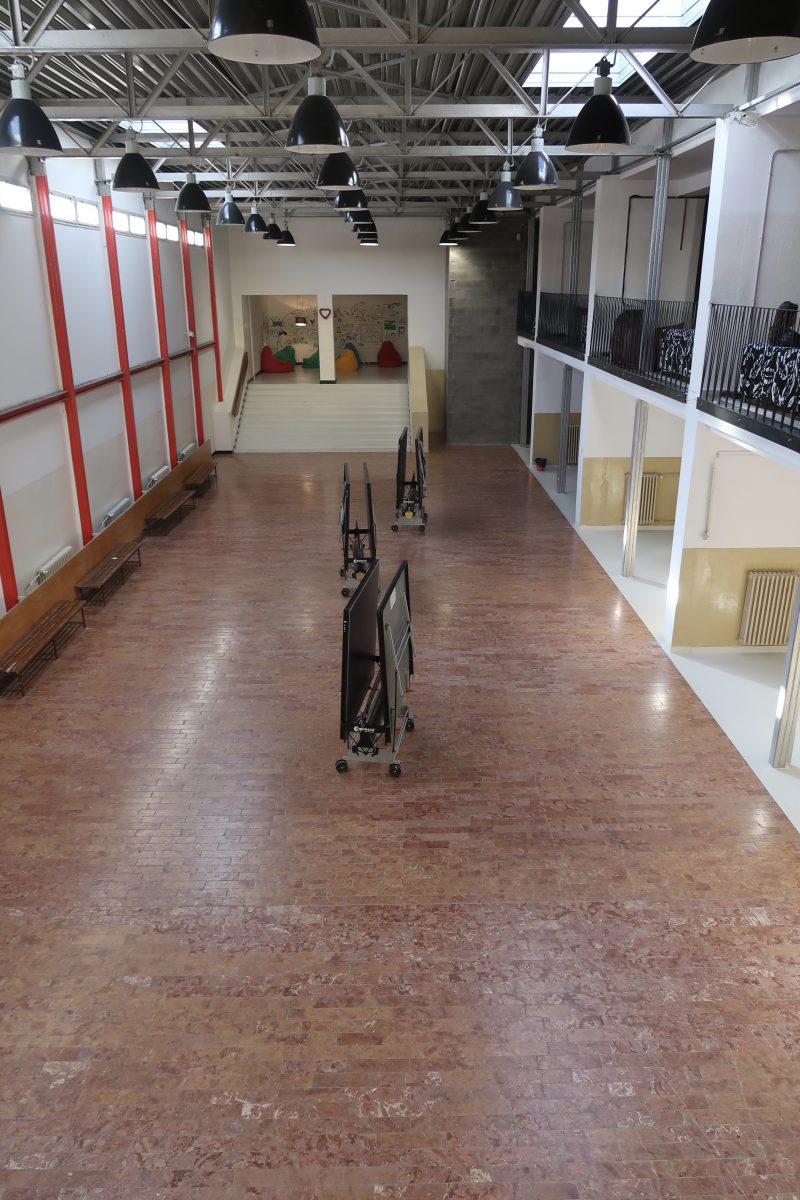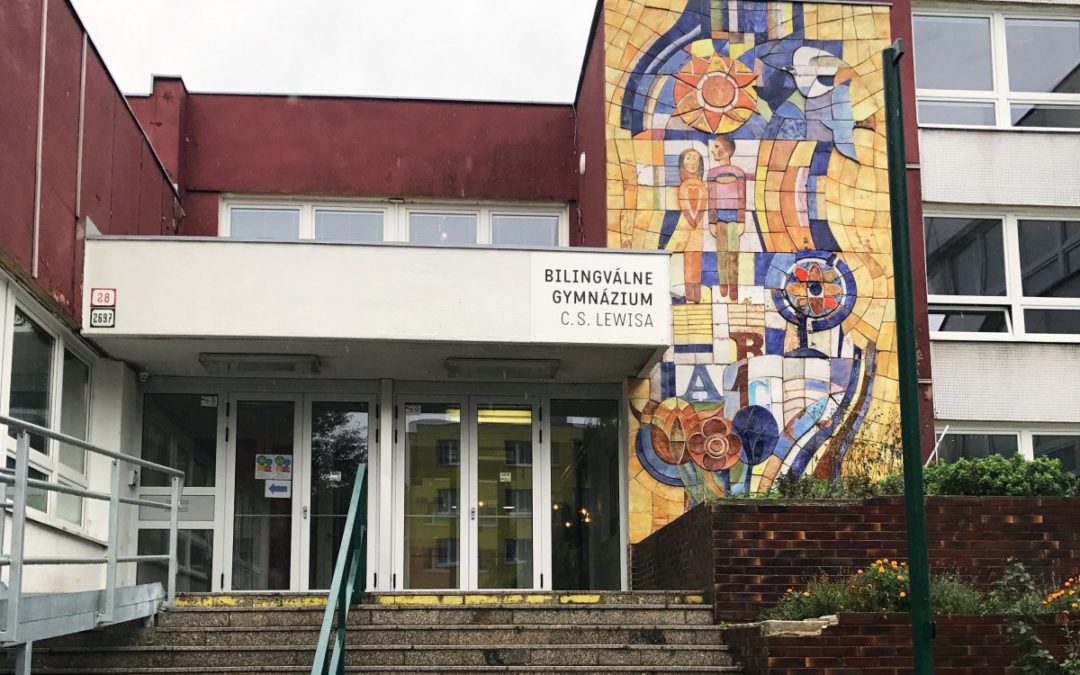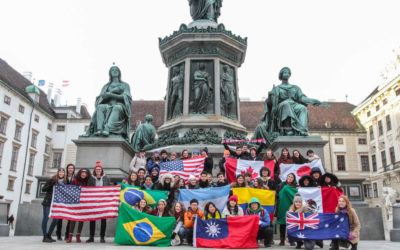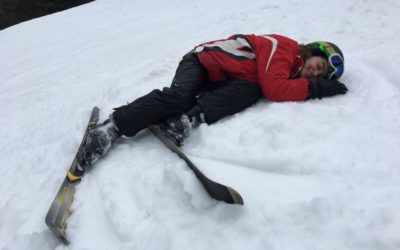Let me begin by saying that the first day of school wasn’t actually the first day of school. On Monday, we didn’t have to show up until 9:30 a.m. (school normally starts at 8:10 unless you’re unlucky enough to have a class scheduled at 7:15.) When everyone did finally show up, we all sat down in what’s called “The Gallery” and the principal gave a speech about community (in Slovak) introduced all eight exchange students (in English) and then a Slovak rapper performed. Yes, you read that correctly, a Slovak rapper. (American schools please take note. Why can’t we be that cool?) Now, that’s not to say that the rapper was any good. In fact, most of the students were hugely unimpressed which made the whole scenario even more comical – if still a bit overwhelming – for us exchange students.

This adorable little space is called The Cafe <3. You can buy coffee and cake and all kinds of good stuff so normally it’s full of students, but I took this picture when I had a free hour while most people where in class.

Aside from the agenda, one of the first differences that I noticed about the school and its students was that you can’t tell how old anyone is. C.S. Lewis Bilingual High School (or in Slovak: Bilingválne Gymnázium C.S. Lewisa http://www.bilgym.sk/index.php?lang=en) is composed of grades 1-5 and students can enter the school after they finish 8th or 9th grade. This totals to 13 or even 14 years of schooling before university. All the exchange students were put into 3rd grade, (it’s still weird for me to say I’m in third grade. I feel like an eight-year-old again) so that means that most of the students in my class are 17, but there are also a few who are 16 or 18 depending on when they started at C.S. Lewis. But back to the age thing; aside from a few very young 1st graders, it’s impossible to tell who is how old or in what grade. I’ve noticed that it gives me an excuse to talk to everyone. Under normal circumstances, I might steer clear of students who were clearly too young or too old, but it’s been easier to be open to talking with everyone – which I should have been doing anyway.
The second difference I noticed was that everyone is refreshingly authentic. In most cases, that authenticity looks like the set of a 90’s movie – but in the best way. Everyone has the high-waisted jeans, platform shoes, and oversized bomber jacket look down to a science. Beyond how they dress, the students are also much more comfortable being themselves in how they speak, act, and think. All the teachers have these amazing, relaxed relationships with the students everyone is on a first name basis with each other. Classes are conducted as more of an exploration of material rather than a lecture and this encourages questions so that the students are more comfortable expressing their own opinions. In American schools, you’re lucky to find a teacher that you can connect with and really learn from (I feel really lucky to have found so many in my high school in Florida) but, here it’s the norm. Also, dress code is not a thing. No one talks about it and it’s not a problem. (Again. American schools please take note. By bringing so much attention to it, administrators have made it into a big deal when it really shouldn’t have to be. You’re actually making yourselves look a little ridiculous by wasting so much time and energy on it.)
Another difference about the school is that each grade (1-5) is separated into classes (usually A-E depending on how many students are in each year). Each class has about 12-15 students. For example, I’m in the 3rd year C class so I’m “3C”. The students in each class have all their subjects together and pretty much spend all their time in school together. I think this really helps promote the safe environment that I was talking about before because students get to know the others in their class really well over the course of five years. On the other hand, beyond selecting a second foreign language (everyone takes intensive English courses, but after that you can pick either Spanish or German) there is very little opportunity to choose specialized classes. From what I’ve seen, there is no way to earn college credit for a European university and although some subjects offer “honors” level, it’s not taught in a different class. Instead, students are just given extra assignments and required to do a little more work. I wouldn’t call this a bad thing, but in the U.S. I really appreaciated being able to tailor my schedule to my interests. Another thing is that even though it’s nice to be welcomed into such a tight knit group, it’s also made it hard for me to meet people that are outside the 12 other students in my class.
The other thing is that students don’t have the same classes every day. Over the course of this semester, all the 3rd year students will take Math, Chemistry, Physics, Biology, History, British Literature, English, Slovak, Spanish/German, Computer Programing, Civics, Religion and Ethics, Geography, and a PE equivalent. I still haven’t decided whether I like this or not, but at least it ensures that the students are constantly building a knowledge base in all these areas.
More from Grace











